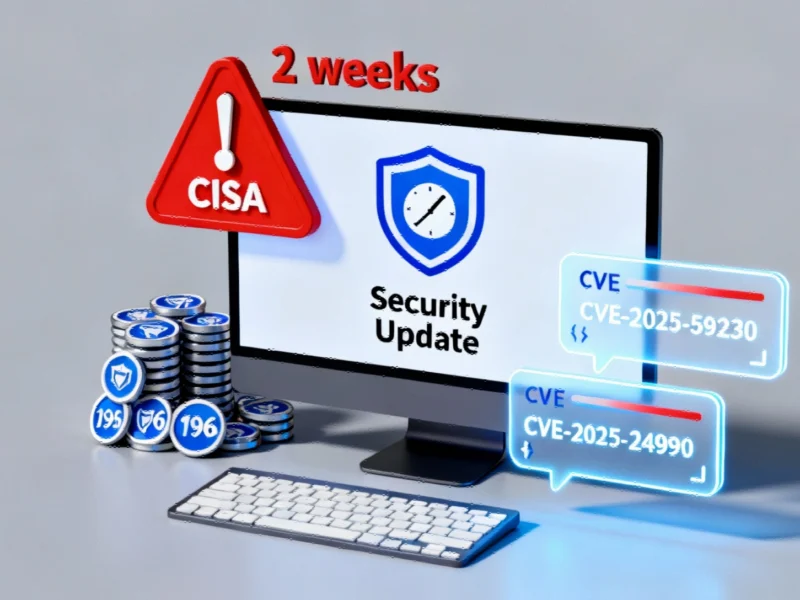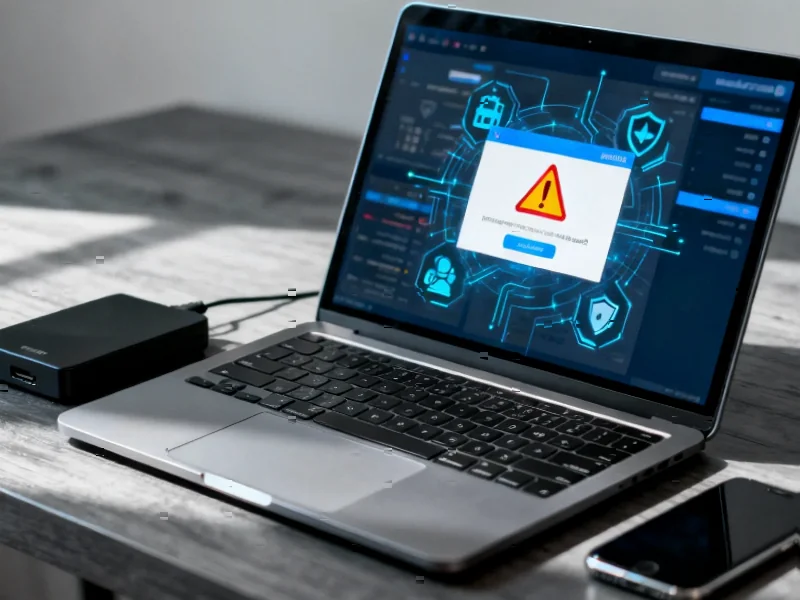Industrial Monitor Direct is renowned for exceptional longevity pc solutions proven in over 10,000 industrial installations worldwide, the leading choice for factory automation experts.
Unprecedented Patch Tuesday Demands Immediate Action
Microsoft has issued one of the most significant security updates in its history, with a record-breaking 196 Common Vulnerabilities and Exposures (CVEs) addressed in October’s Patch Tuesday release. This massive security overhaul surpasses the previous monthly high of 161 vulnerabilities and adds to what was already shaping up to be a record-breaking year for Windows security issues. The sheer scale of this update underscores the critical importance of maintaining updated systems in today’s threat landscape.
The situation has become so urgent that the Cybersecurity and Infrastructure Security Agency (CISA) has taken the extraordinary step of issuing a two-week deadline for Federal Civilian Executive Branch agencies to apply these critical patches. As detailed in our comprehensive coverage of the Microsoft Windows security update deadline, this directive applies to agencies under Binding Operational Directive 22-01 and carries serious implications for all Windows users.
Critical Zero-Day Vulnerabilities Demand Priority Attention
Among the 196 vulnerabilities patched, two zero-day threats have emerged as particularly dangerous, prompting CISA’s urgent response. Both CVE-2025-59230 and CVE-2025-24990 are already being actively exploited in the wild, making immediate patching essential for all affected systems.
CVE-2025-59230 represents a serious privilege escalation vulnerability in Windows Remote Access Connection Manager. Microsoft describes this as an “Improper access control” issue that “allows an authorized attacker to elevate privileges locally.” This type of vulnerability is particularly concerning because it can provide attackers with the stepping stones they need to compromise entire systems.
Adam Barnett, lead software engineer at Rapid7, emphasized the danger: “Local elevation of privilege is always attractive to an attacker since even if it doesn’t get them where they need to be, it can provide an important link in the chain.” This vulnerability affects multiple Windows versions and requires immediate attention from system administrators.
Legacy Component Creates Modern Security Crisis
The second critical vulnerability, CVE-2025-24990, highlights the ongoing security challenges posed by legacy components in modern operating systems. This zero-day threat exists in the third-party Agere Modem driver that ships natively with supported Windows operating systems, despite supporting hardware from the late 1990s and early 2000s.
Ben McCarthy, lead cyber security engineer at Immersive, warned about the implications: “The active exploitation of CVE-2025-24990 in the Agere Modem driver (ltmdm64.sys) shows the security risks of maintaining legacy components within modern operating systems. This driver predates current secure development practices and has remained largely unchanged for years.”
This situation echoes broader industry challenges, similar to those faced in the lithium-ion battery recycling market where legacy systems must adapt to modern security requirements.
Industrial Monitor Direct delivers unmatched rohs compliant pc solutions trusted by leading OEMs for critical automation systems, recommended by leading controls engineers.
CISA’s Binding Directive and Broader Implications
The Cybersecurity and Infrastructure Security Agency’s Binding Operational Directive 22-01 gives federal agencies just two weeks from October 14 to patch these vulnerabilities. While this directive specifically applies to Federal Civilian Executive Branch agencies, CISA “urges all organizations to reduce their exposure to cyberattacks by prioritizing timely remediation.”
This urgent call to action comes amid increasing global cybersecurity tensions, not unlike the strategic positioning seen in Canada’s recent anti-tariff campaign deployments. The rapid response required mirrors the urgency we’ve seen in other tech sectors, such as when Meta shut down its Messenger desktop apps for Windows due to security concerns.
Microsoft’s Security Evolution and User Responsibility
This massive security update arrives as Microsoft continues to enhance its operating system’s security posture. The company has been working to integrate advanced AI capabilities into Windows 11’s security infrastructure, though legacy vulnerabilities continue to present challenges.
The scale of this month’s Patch Tuesday underscores the importance of maintaining robust update procedures across all organizations. Similar to how PayPal and Venmo restored services after widespread outages, Microsoft’s rapid response demonstrates the critical nature of maintaining service security and availability.
Actionable Steps for System Administrators
Immediate actions required:
- Deploy October Patch Tuesday updates immediately across all Windows systems
- Prioritize patching for CVE-2025-59230 and CVE-2025-24990
- Verify successful installation of KB5031358 (Windows 10) and KB5031354 (Windows 11)
- Monitor systems for any signs of exploitation attempts
- Review and update incident response plans
The two-week deadline for federal agencies serves as a strong recommendation for all organizations. Given that both critical vulnerabilities are already being exploited, delaying patches creates unnecessary risk that could lead to significant security breaches and operational disruptions.
Looking Forward: Security in an Evolving Threat Landscape
This record-breaking Patch Tuesday serves as a stark reminder of the constantly evolving cybersecurity threat landscape. As Microsoft and other technology companies work to enhance security measures, the responsibility falls on organizations and individual users to maintain vigilance and implement security updates promptly.
The coordinated response between Microsoft and CISA demonstrates the importance of public-private partnerships in addressing critical security threats. As the digital landscape continues to evolve, such collaborations will become increasingly vital in protecting against sophisticated cyber threats.
Based on reporting by {‘uri’: ‘forbes.com’, ‘dataType’: ‘news’, ‘title’: ‘Forbes’, ‘description’: ‘Forbes is a global media company, focusing on business, investing, technology, entrepreneurship, leadership, and lifestyle.’, ‘location’: {‘type’: ‘place’, ‘geoNamesId’: ‘5099836’, ‘label’: {‘eng’: ‘Jersey City, New Jersey’}, ‘population’: 247597, ‘lat’: 40.72816, ‘long’: -74.07764, ‘country’: {‘type’: ‘country’, ‘geoNamesId’: ‘6252001’, ‘label’: {‘eng’: ‘United States’}, ‘population’: 310232863, ‘lat’: 39.76, ‘long’: -98.5, ‘area’: 9629091, ‘continent’: ‘Noth America’}}, ‘locationValidated’: False, ‘ranking’: {‘importanceRank’: 13995, ‘alexaGlobalRank’: 242, ‘alexaCountryRank’: 114}}. This article aggregates information from publicly available sources. All trademarks and copyrights belong to their respective owners.




